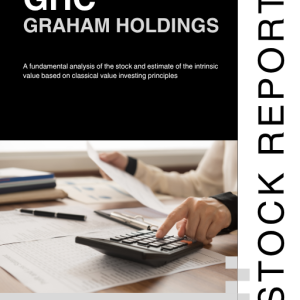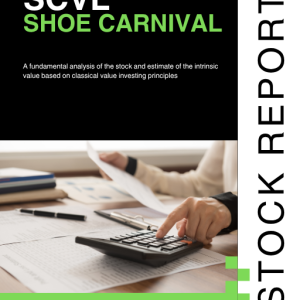
The Timeless Debate on Dollar Cost Averaging
Dollar cost averaging (DCA) is one of the most popular investing strategies for retail investors. It involves consistently investing a fixed dollar amount into stocks or funds at regular intervals, regardless of market price. Over time, this approach helps smooth out volatility and removes emotional decision-making from investing.
However, value investors operate differently. They do not simply buy and hold broad market funds; instead, they focus on identifying mispriced assets and strategically allocating capital for maximum return. This raises an important question: does DCA align with value investing principles, or does it contradict the essence of seeking undervalued opportunities?
Understanding how DCA interacts with value investing is crucial, particularly when employing an allocation strategy such as Kelly fractions. In this article, we will explore its advantages, limitations, and alternative strategies to determine its role in a disciplined value investment approach.
The Traditional Case for Dollar Cost Averaging
The general consensus around DCA is that it benefits investors who consistently contribute to their portfolios, particularly those invested in index funds or diversified portfolios.
Why traditional investors use DCA:
- Reduces Market Timing Risk – Spreading purchases over time ensures that investors do not deploy all capital at peak prices.
- Encourages Consistent Investing – Regular contributions prevent emotional biases and allow money to continuously work in the market.
- Effective for Passive Index Investors – Those following a buy-and-hold strategy benefit from the discipline and reduced volatility of DCA.
While this method suits index investors, value investors take a more targeted approach. Their focus is on finding undervalued stocks rather than regularly buying a broad market index. This makes timing and pricing crucial considerations, and dollar-cost averaging may not always be the best deployment of capital.
Dollar Cost Averaging with an Allocation Strategy (Using Kelly Fractions)
For investors using systematic allocation methods like Kelly fractions, DCA can serve a different purpose. Instead of just averaging into positions, it helps maintain an optimal allocation by correcting portfolio drift and ensuring capital is weighted appropriately.
How DCA helps maintain allocation discipline:
- Portfolio Rebalancing – As stocks appreciate or decline in value, regular investments help realign the portfolio closer to its optimal allocation.
- Preventing Overexposure to Overvalued Stocks – Stocks that rise in price may have lower future returns. Allocating new capital to underweighted, undervalued stocks optimizes expected growth.
- Enhancing Long-Term Return Potential – By recalculating portfolio weights periodically, investors can direct capital into areas with the highest expected returns.
This approach ensures that investors are not simply deploying funds at random but are using DCA to maintain a disciplined, calculated capital allocation process.
Dollar Cost Averaging Without a Formal Allocation Strategy
Investors who are not following strict allocation frameworks can still apply DCA effectively by reinvesting dividends or new contributions in a strategic manner.
Ways value investors can apply DCA effectively:
- Targeting the Most Undervalued Positions – Instead of equal-weighting purchases, investors can direct funds to stocks with the highest upside potential.
- Gradual Position Building – Rather than making large lump-sum investments, value investors can enter positions incrementally to mitigate risk.
- Adjusting Based on Sector Trends – If an entire sector is undervalued, capital can be deployed strategically to maximize potential gains over time.
Rather than rigidly following DCA, value investors can modify the approach to ensure capital flows toward high-value opportunities rather than simply averaging into the market without consideration.
The Alternative: Letting Cash Accumulate for New Ideas
Many value investors prefer an alternative to DCA: accumulating cash from dividends and new contributions and deploying it only when compelling opportunities arise.
Advantages of holding cash instead of DCA:
- Maintains Capital for Future Market Downturns – Instead of consistently buying at regular intervals, investors can use cash to strike at deeply undervalued opportunities during market corrections.
- Avoids Paying High Prices for Mediocre Investments – Holding cash prevents investors from feeling forced to invest in overvalued assets.
- Ideal for Concentrated Portfolios – Investors focused on a small number of high-conviction positions may benefit from waiting for strong buy signals before deploying capital.
The main drawback of this approach is that cash sitting on the sidelines does not generate returns. Additionally, waiting for the “perfect” opportunity can lead to indecision and underperformance if those opportunities do not materialize. A hybrid strategy may provide the best balance.
Which Approach is Right for You?
The decision between DCA and holding cash depends on an investor’s strategy, risk tolerance, and long-term goals.
DCA Works Best If:
- You use Kelly fractions or another allocation strategy to maintain portfolio balance.
- You regularly reinvest dividends into stocks that are still undervalued.
- You prefer a steady and systematic approach to deploying capital.
Holding Cash Works Best If:
- You seek maximum flexibility to invest during major market downturns.
- You concentrate your portfolio and want to avoid diluting high-conviction positions.
- You prioritize patience and prefer to invest only in exceptional opportunities.
Some experienced value investors take a hybrid approach, systematically allocating a portion of new capital while keeping reserves available for high-quality opportunities. Alternative systems include value averaging, which is shown to perform better than DCA although it may be a little more involved to set up.
The Best of Both Worlds?
Dollar cost averaging can be useful for value investors, but only when applied thoughtfully. When combined with an allocation strategy, DCA helps maintain portfolio discipline. However, blindly deploying capital without considering valuation risks inefficiency. Alternatively, accumulating cash allows for more precise entry points but comes with the challenge of timing and opportunity cost.
The best approach depends on an investor’s ability to identify opportunities, manage portfolio allocations, and remain disciplined in capital deployment. Whether you choose to implement DCA, hold cash, or blend the two, ensuring that your strategy aligns with your investing philosophy is the key to long-term success.
What is your preferred approach? Do you favor consistent reinvestment through DCA, hold cash for the right moment, or use a hybrid strategy? Share your thoughts and insights.
Featured products

Shailesh Kumar, MBA is the founder of Astute Investor’s Calculus, where he shares high-conviction small-cap value ideas, stock reports, and investing strategies.
His work has been featured in the New York Times and profiled on Wikipedia. He previously ran Value Stock Guide, one of the earliest value investing platforms online.
Subscribe to the Inner Circle to access premium stock reports and strategy insights.
Featured in:











